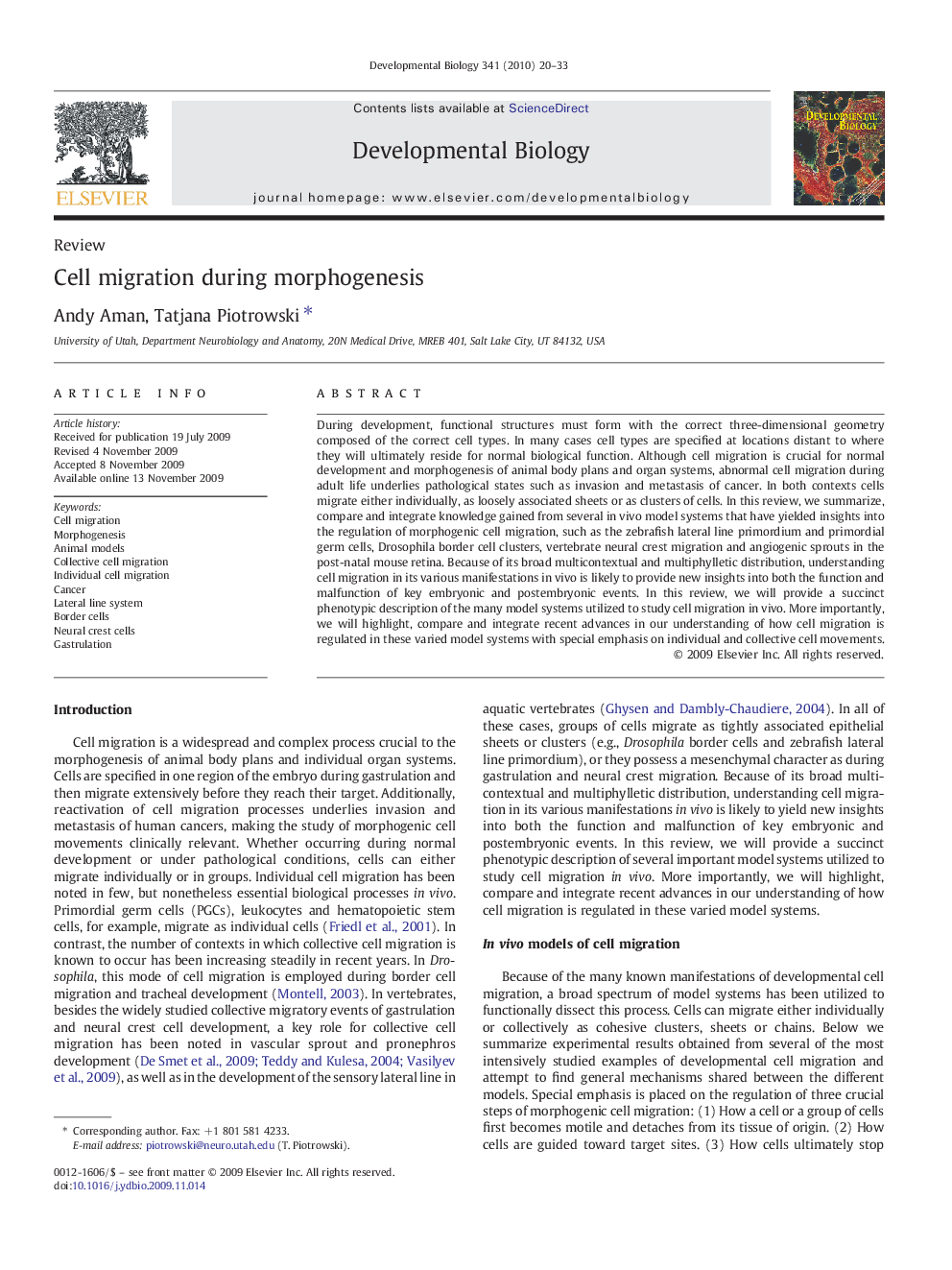| Article ID | Journal | Published Year | Pages | File Type |
|---|---|---|---|---|
| 2173944 | Developmental Biology | 2010 | 14 Pages |
During development, functional structures must form with the correct three-dimensional geometry composed of the correct cell types. In many cases cell types are specified at locations distant to where they will ultimately reside for normal biological function. Although cell migration is crucial for normal development and morphogenesis of animal body plans and organ systems, abnormal cell migration during adult life underlies pathological states such as invasion and metastasis of cancer. In both contexts cells migrate either individually, as loosely associated sheets or as clusters of cells. In this review, we summarize, compare and integrate knowledge gained from several in vivo model systems that have yielded insights into the regulation of morphogenic cell migration, such as the zebrafish lateral line primordium and primordial germ cells, Drosophila border cell clusters, vertebrate neural crest migration and angiogenic sprouts in the post-natal mouse retina. Because of its broad multicontextual and multiphylletic distribution, understanding cell migration in its various manifestations in vivo is likely to provide new insights into both the function and malfunction of key embryonic and postembryonic events. In this review, we will provide a succinct phenotypic description of the many model systems utilized to study cell migration in vivo. More importantly, we will highlight, compare and integrate recent advances in our understanding of how cell migration is regulated in these varied model systems with special emphasis on individual and collective cell movements.
